As an Amazon Associate, I earn from qualifying purchases with no additional costs for you.
Syrah, or Shiraz as it’s also commonly called, is a wine quickly growing in popularity around the world for its flavor and age-ability. Storing this type of wine is a lot easier than you may be thinking. There are some basics you need to follow in order to have the best-tasting first sips of Syrah that will really open your eyes.
Syrah is best stored at a consistent 55° F, in 70% humidity, away from direct sunlight, lying flat with labels facing up. While most Syrahs are best stored for less than 5 years, many age-worthy wines should be stored for 6-13 years or more.
Syrah, or Shiraz in Australia, is something of a bridesmaid in the world of wine grapes. It’s underrated and underappreciated, but Syrah can be just as beautiful and powerful as the well-adorned Cabernet Sauvignon. In terms of age-ability, the best Syrahs in the world can continue to evolve and blossom over a lifetime, if stored correctly.
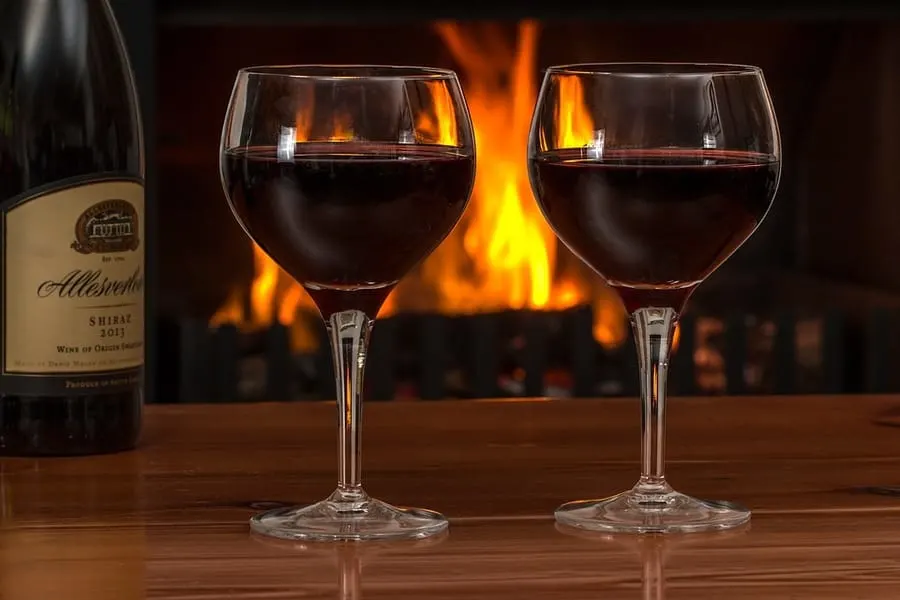
TIP: If you want to check out the best refrigerator for wine storage, I recommend trying out the Avation (18 bottles) compressor refrigerator with Wi-fi smart app control cooling system. You can find this refrigerator by clicking here (Amazon link).
A Quick Primer on Syrah
Not to be confused with Petite Sirah (another grape variety entirely), Syrah is a dark-skinned grape originating in the Rhône region of France, in the southeastern corner of the country, where some of its most prestigious examples are still produced today.
Although it is grown all over the world, its most celebrated growing regions are the Rhône Valley in France, the Barossa Valley of Australia, as well as California and Washington state in the United States.
Although there are fantastic examples coming from the New World, the French Syrahs from the northern Rhône specifically, where it is celebrated as the main red grape of the region (as opposed to the southern Rhône, where it is traditionally a blending grape), are the most celebrated in the world. Hermitage, Cornas, and Côte-Rôtie make up the holy trinity of Syrah appellations in the northern Rhône Valley.
TIP: To learn how to store wine without a wine refrigerator, check out this helpful article. If you have limited space or live in an apartment, then this helpful article on storing wine in small spaces is just right for you.
Recommendation box: Everything you need to enjoy your wine as much as possible. All recommended products are personally tested and regularly used by experts from this website (Amazon links):
> Ivation Wine Cooler – Energy-efficient wine cooler for 18 bottles with Wi-fi smart app control cooling system.
> Wine Rack – Beautiful, elegant wood rack for up to 7 bottles and the choice of vertical or horizontal storage.
> Durand Wine Opener – Classic vintage wine opener (we like all these classic staff).
> YouYah Iceberg Wine Decanter – The most beautiful and handy wine decanter we personally use.
> Bormioli Rocco Wine Glasses – A set of eight elegant and traditional wine glasses made in Italy.
> Vintorio Wine Aerator – Simple but really useful wine aerator for a reasonable price.
> The Original Vacu Vin Wine Saver – The best wine saver on the market in a package with two vacuum stoppers and two wine servers.
And if you want to become a true connoisseur of wine, we recommend reading the book Wine Folly: The Essential Guide to Wine (Amazon link), where you will find all the information you need about winemaking, wine varieties, flavors, and much more.
How to Store Syrah
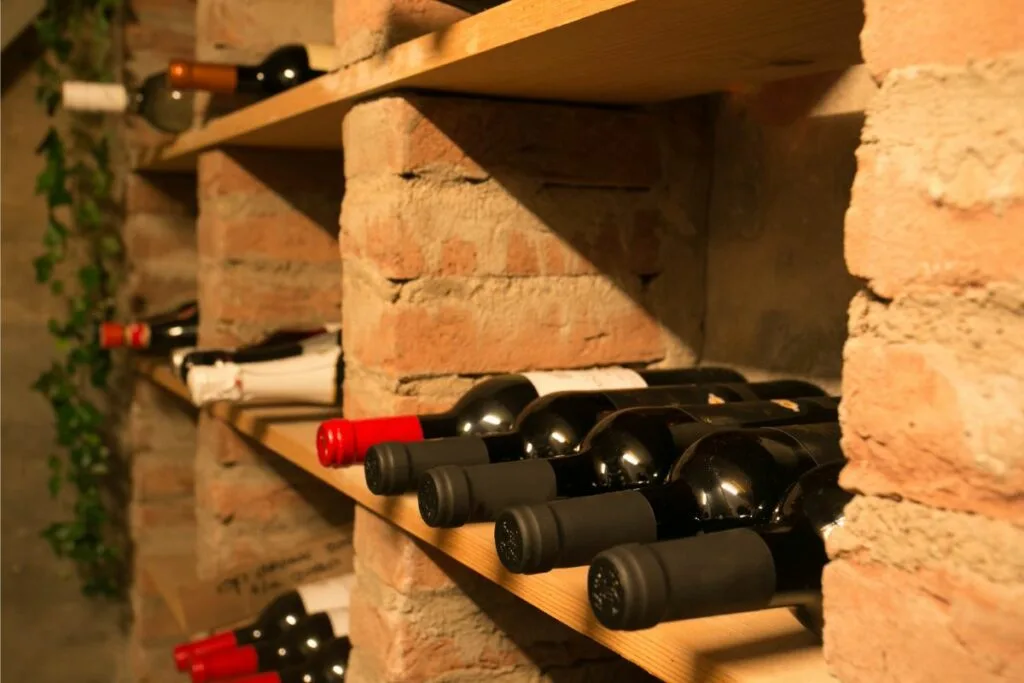
Storing Unopened Syrah: Temperature
Because great Syrah is such an incredibly long-lived wine, proper storage is essential. Perhaps the most important aspect of correct wine storage is temperature.
There is a slight range of acceptable temperatures (50-60° F), but the key thing is that once a temperature is chosen, the wine must stay at that temperature for the entirety of its storage.
Temperature fluctuations can have a seriously negative effect on aged wine; the delicate enzymatic reactions that account for a perfectly aged wine can be thrown off-course with temperature changes.
Mold is also a concern, with the natural condensation that is formed with temperature changes contributing to microbial growth.
TIP: Are moldy wine corks safe? Can you still drink the wine? Find out in this article. Should red wine be served at room temperature? This guide explains all you need to know.
Of course, while there is about a 10-degree window of “acceptable” temperatures for wine storage, within that window there are considerations to be had.
The same wine stored at the cold extreme of that window versus the warm extreme ages an average eight times more slowly than the latter.
Although the best idea is to trust your wines to professional storage, as a rule, it’s safer to skew colder on the temperatures than hotter; cooked wine is irreversibly damaged, and is considered unsalvageable.
Storing Unopened Syrah: Humidity
Humidity is a factor that gets less attention in the general conversation about wine storage, but it is crucially important and perhaps even trickier to get right at home. High-end Syrahs, especially French Syrahs, are going to come stoppered with natural cork.
Being an organic material with a plant-based cellular structure, the cork’s structure can crack and crumble if its surrounding environment is too dry. Too moist, and you run the risk of mold and mildew infiltrating your collection.
TIP: Most wines go bad once you pop the cork within a day or so. But a Coravin Wine Preservation system (available for a great price on Amazon) can extend the life of your opened wine for weeks or even months. It is awesome. You should check it out to see if it fits your lifestyle.
Your geography and your altitude also make a difference, as well as the weather throughout the year in your region. There are a number of MacGuyver-esque solutions to too-dry or too-moist conditions, but who has the time to fuss with baking trays of water, almanacs, humidifiers, and dehumidifiers, just to keep a wine cellar at a steady 60%?
When to Pop the Cork on your Syrah
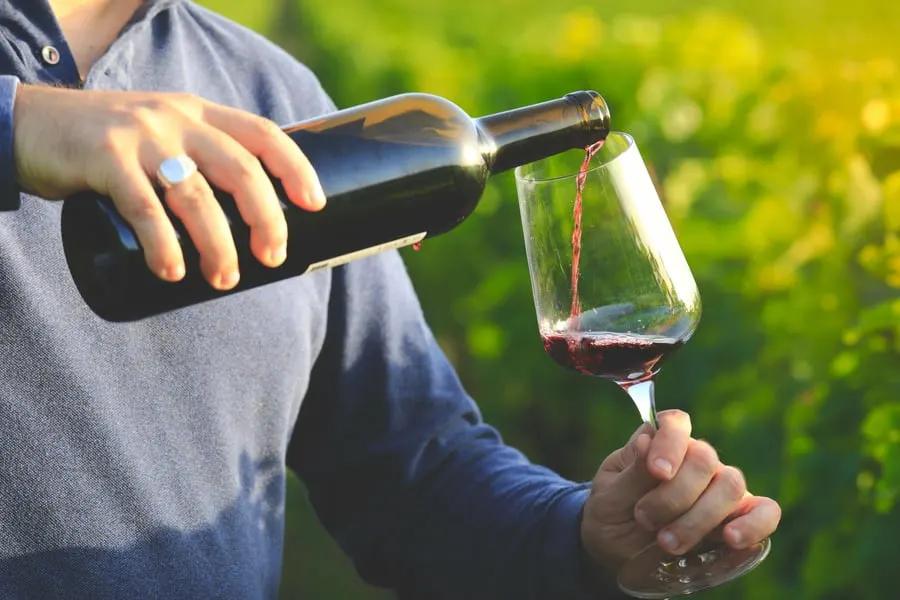
When talking about current-vintage Syrah, a wine that’s normally purchased directly from a store shelf, the easiest and most useful indicator of ageability is the retail price.
Most Syrahs under $25 are meant to be consumed right away, and although some of them can hang on for a few years, the most bargain-priced Syrah/Shiraz wines actually start to decline in quality soon after hitting retail shelves.
There are exceptions to every rule, and a good wine steward at a reputable wine shop should be able to guide you through their Syrah selections. However, there are a few good rules of thumb to keep in mind when choosing Syrahs to age, beyond the sticker price.
The producer is the most reliable indicator of ageability and quality of wine; this actually goes for all wine, not just Syrah. The producers of the greatest wines in the world, whether it be French Syrah, Champagne, Napa Valley Cabernet, or other wines, won’t produce a wine that could tarnish their image.
Even an “entry-level” wine or a “declassified” wine from the greatest producers of Syrah likely will have a good long life in the cellar. 100% Syrahs Cotes du Rhones can be absolute steals. The greatest producers are usually located in the best terroirs for the wines in question, and Syrah is no exception.
The other telltale marker of an ageable Syrah is its location of origin. Is the fruit source a great sweeping swath of land, like “California,” or is it a specific, demarcated place, even a single vineyard?
TIP: Discover the true differences between French and Californian wines in this guide. This article explains why Californian wines are so good and unique! Read on to find out why.
Chances are, the smaller the source of the fruit, the more likely it is that the wine is crafted with an eye toward age-ability.
A winemaker who wants to make a wine from one small place with a distinct character is a winemaker who wants the story of that vintage in that place told beautifully for years to come.
How Long to Age Syrah
Syrahs really diverge into two camps when it comes to aging. The first category of Syrahs, the style made to be approachable early on, should ideally be consumed within the first five years after winery release and purchasing.
These can be really quite delicious wines, with great quality for the price, luscious ripe fruit notes, and lovely depth of flavor to stand up to hearty meals and red meat.
TIP: 4 crucial factors determine a good wine – read on to find out what they are. Read this interesting article to discover what makes fine wine fine!
The second category of Syrahs, the style made to be aged, can be unforgiving and severe on release. They can be quite tannic (one of the factors that give it such a long life), and the lush fruit notes can be hiding under those earthy, bitter flavors. This phase continues for about 5 to 8 years at which point the wine enters a sort of “dumb phase.”
To summarize a host of enzymatic chemical processes, Syrahs that are about 5-13 years old can be aromatically quiet, with astringent earth and tannic notes dominating the wine.
It’s at the 12-15 year mark that age-worthy Syrahs really begin to open up; a long time to wait, to be sure, but once they get there, they are some of the most pronounced wines in the world. In the most celebrated vintages, Syrahs from over 30 or 40 years ago are still sought after in the auction market today in 2020.
Storing an Open Bottle of Syrah
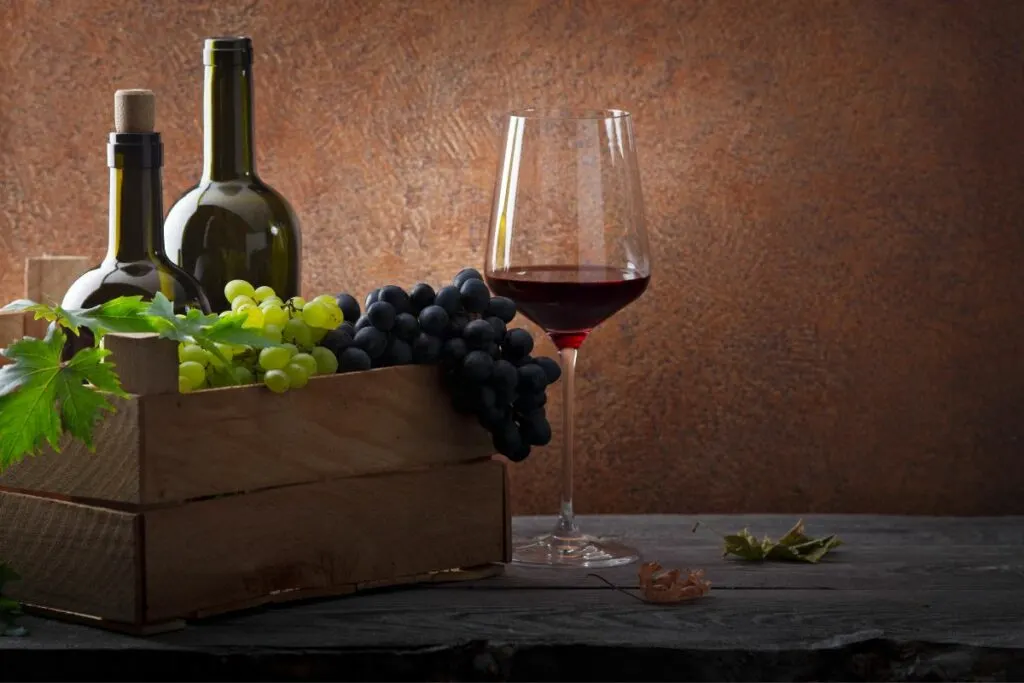
As a general rule, wines that are opened tend to last longer if the wine was made to be ageable, to begin with, especially if they are opened young.
After all, opening and exposing the wine to oxygen is a roughly fast-forwarded version of what happens over a long period of time in the wine cellar (while missing on the more subtle aromatic changes of proper cellar storage).
If you end up with an open bottle of Syrah, the easiest thing to do is to carefully close the bottle and set it upright in the refrigerator.
TIP: Are you interested in buying a wine stopper? We’ve personally tried and recommend buying one of these wine stoppers (Amazon links):
- The Original Vacu Vin Wine Saver: Our top choice. Very easy-to-use wine stopper/saver. You can enjoy a glass of fresh wine whenever you want without worrying about wasting any.
- EZBASICS Wine Saver: Great alternative to Original Vacu Vin Saver. This wine stopper keeps the flavor of wine for up to one week.
- Champagne Stopper by MiTBA: Wine stoppers for sparkling wines are different. This wine stopper seals your bottle and increases the pressure so your beverage’s bubbles won’t go to waste.
Try not to disturb the wine too much; don’t decant it before storing it, and don’t filter it even though there may be some sediment in the wine. The cold temperature should slow down the oxidative process, and buy you three, even four days to sip on the wine.
Syrah Serving Temperature
Syrahs are made in so many different styles, all over the world. Each of these styles calls for slightly different serving conditions.
Great-aged Syrah or Shiraz wine from anywhere in the world should be served just under room temperature (at around 65° F) to give the wine a chance to sing. Syrah is famous for its delicate peppery, flowery notes, and too cold a serving temperature can prevent those notes from expressing themselves.
Younger Shiraz from Australia, especially from producers with a powerful style, should be served at a slightly lower temperature (60-63° F).
TIP: Are some wines best served cold? Find out here! This guide explains which wines should be served at room temperature.
The lower temperature can help offset the high alcohol levels on the palate. Usually, by the time the wine is brought to the table, opened, decanted, and poured into the glasses, the wine has come up to this temperature on its own.
There is a new wave of producers, many of them from the American West Coast, that are producing a unique style of Syrahs.
TIP: If you are interested in buying a wine decanter, I recommend purchasing these two top-quality decanters:
- USBOQO Wine Decanter (check it out on Amazon & read customer reviews)
- Iceberg Wine Decanter (check it out on Amazon & read customer reviews)
Their hallmark style is minimal intervention, with whole-cluster fermentation/carbonic maceration adding a high-toned lightness to the wine.
The style is quite reminiscent of the Gamay red wines from Beaujolais in France. These wines can be served slightly chilled, right at cellar temperature, without coming across as too tannic or wound-up–the perfect summer barbecue wine, to pair with your red meat while retaining a refreshing chill.
Oxygen & Syrah
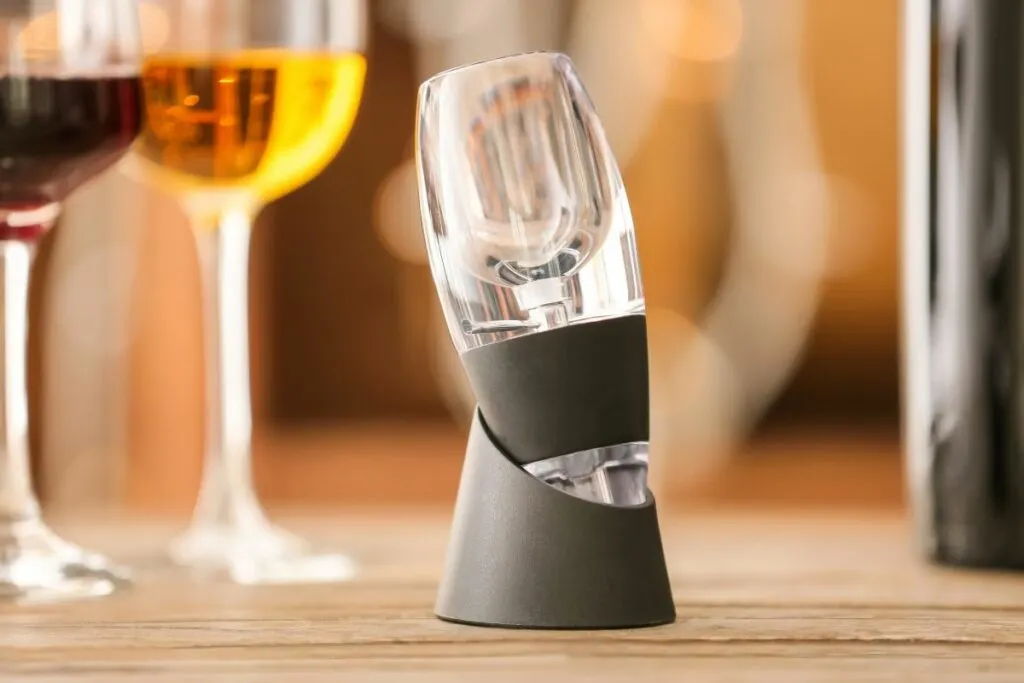
With all the different styles and categories of Syrah just mentioned, it might be confusing whether Syrah should be aerated or decanted.
The category of Syrahs not meant to be aged is generally fine to be had straight from the bottle. However, because age-worthy Syrahs are so tannic in their youth, decanting is necessary when opening one of those age-worthy Syrahs before the 12-15 year mark.
This allows the wine to soften up, allowing some of the fruit and floral notes to come to the forefront of the palate.
Further, a bottle of Syrah that’s been perfectly aged may have some sediment that has precipitated out of the wine. A decanter is designed to catch as much of that along its sides as possible.
Warning: Things to Watch Out For
Syrah is a beautiful wine with a huge array of variations. Hard as it might be, try not to open them too early if you can help it.
When you do finally serve your wine, try not to overchill young wines (resulting in a too-tight, too-tannic wine), and try not to let your old wines come all the way up to room temperature. But the biggest thing to do is to let all of this scare you away from trying this amazing varietal; go forth and find your favorite style of Syrah!
TIP: Check out this page for a complete list of wine products and accessories I love. You’ll find my recommendations for wine refrigerators, decanters, and aerators and the best place to buy wine online. Click here to see the complete listing.
